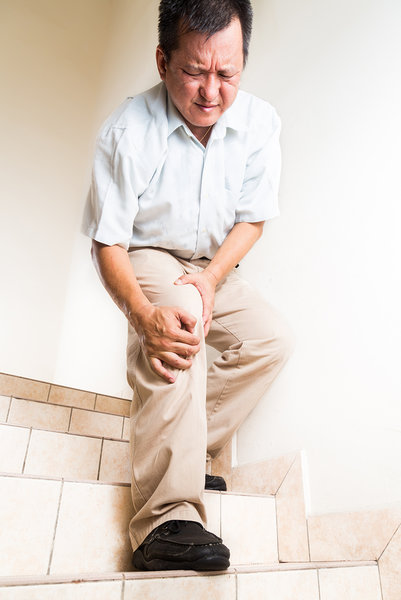 Most often, people go about their daily life without knowing a simple knee pain has a story to tell. People commonly blame exhaustion, overwork or an unusual sleeping position for their aching knee joint. The logical modus operandi is to self-diagnose and treat as if it is a temporary condition, but how do you know if it is something chronic like arthritis?
Most often, people go about their daily life without knowing a simple knee pain has a story to tell. People commonly blame exhaustion, overwork or an unusual sleeping position for their aching knee joint. The logical modus operandi is to self-diagnose and treat as if it is a temporary condition, but how do you know if it is something chronic like arthritis?
Osteoarthritis is a degenerative joint disease. It is often called the "wear and tear" disease of the joints and is the most common chronic condition of the joints. It occurs when the cartilage that provides cushioning in the joint breaks or wears down.
The typical symptoms associated with knee osteoarthritis are pain and stiffness in the joint accompanied by a limited range of motion. Knee pain associated with an injury usually has a quick onset such as after a fall or trauma and is accompanied by redness, swelling and warmth. The pain associated with arthritis on the other hand, creeps up on you. At first you may have some pain while walking, especially when walking longer distances. Then there might be that twinge you feel when transitioning from a sitting to standing position or when you are walking up stairs. The knee may sometimes feel like it is going to give out on you or it may even lock up. All seemingly small things, but eventually the symptoms happen more frequently and become more severe.
When the pain is acute and constant, evaluation by a doctor is required. This constant pain occurs when there is bone-on-bone grinding. The loss of cartilage means the joint can no longer operate smoothly. An x-ray can clearly see this loss of cartilage and is important in the diagnosis process. Loss of cartilage can be due to:
- A previous injury to the knee
- Repeated knee strain
- A fracture or ligament tear
- A genetic disposition
- Overweight and obesity which add stress on the joint
Additional tests may be ordered, so the doctor has precise information on the condition of the knee. Treatment will vary depending on the results of the tests.
In general, pain and swelling are treated with over the counter painkillers and anti-inflammatory medications. Stronger prescription medications are used when the there is no relief using over-the-counter remedies.
Some additional ways to manage knee osteoarthritis at home are:
Exercise/physical therapy. Keep those knees in motion to maintain strength and the range of motion.
- Weight - having a healthy weight takes the stress off the knees
- Knee brace - wearing a knee brace will provide support, help the knee remain stable, and it often relieves pain
- Hot and Cold Packs - Applying heat and cold to the area helps reduce inflammation and relieves pain
- Knee replacement surgery - the last resort after non-surgical treatments have failed to produce an adequate response
For more information on knee osteoarthritis treatments, contact Dr. Dan Albright at 919-863-6808.





